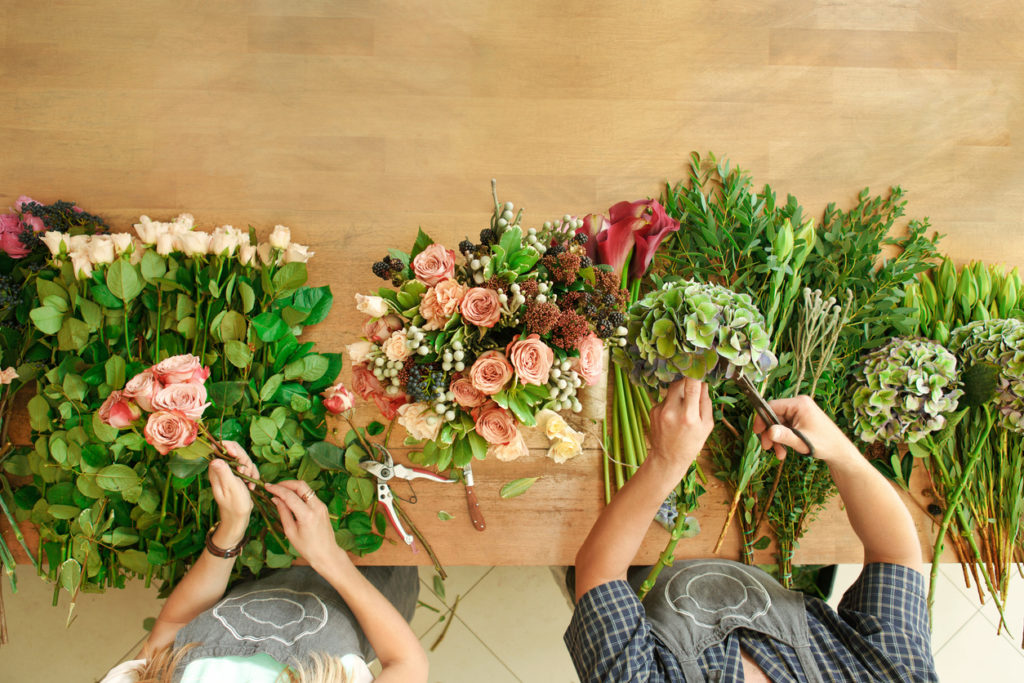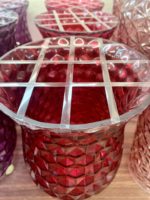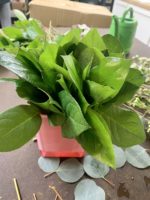Flower Arranging 101: Anyone Can Do It!
Ralph Waldo Emerson, America’s great essayist and poet, once said, “The earth laughs in flowers.” Ol’ Waldo may be on to something because I certainly felt like the butt of a joke after a recent attempt to make a showstopper arrangement for a friend’s baby shower. (I was much better at making peach Bellinis.) Ready to resign myself to the obvious, that I didn’t have the talent for florals, I turned to a professional for help before throwing in the scissors…which, of course, you should never throw.

Melissa Brock, whose family has owned TCU Florist for almost 30 years, assured me that anyone can create a beautiful flower arrangement. She took me behind the scenes of her shop, where her team was effortlessly creating stunning bouquets, and gave me the 101 on flower arranging.
Consider the purpose of your arrangement
As existential as it sounds, there’s a reason for your flowers. If you’re hosting an event, you might want to select a longer lasting flower so that you can prep the arrangement a day or two prior in order to save yourself time. Brock’s favorites include mini calla lilies, sunflowers, snapdragon, roses and carnations. If you opt for roses, be sure to select a variety with a high petal count which will take longer to open.

photo credit: Hannah Bush
Tape your vase
A universal fact is that no one enjoys a droopy arrangement. And in order to prevent drooping, there’s a trick of the trade which will keep your stems upright and in place, allowing for a more uniform presentation. Using clear tape, create a grid across the top of your vase before filling in with greenery and flowers. It’s that simple.
Measure your vase and trim accordingly
The go-to rule is to have your arrangement match the size of your vase’s base. For example, if your vase has an 8-inch base, you will want roughly 8 inches of flower across the top. Brock says hydrangeas are great to work with since they take up a lot of space, which is an especially helpful tip if you’re trying to stretch your floral budget.

photo credit: Hannah Bush
Fill with greenery
Greenery serves a dual purpose. Not only will it fill in your arrangement, but it will help with cost. Brocks says smaller greenery is easier for beginners to work with and recommends lemon leaf, ferns and eucalyptus.
Choose a focal flower
Incorporating an eye-catching feature will make your arrangement pop. Brock likes to use hydrangea or a “big, beautiful rose” to achieve this. Or do something less traditional like a tropical flower. Tropics, Brock says, which were trendy in the 80s, are having a major comeback.

photo credit: Hannah Bush
Symmetry
Since most arrangements will be displayed on a table and visible at all angles, Brock recommends the mirror technique. Having one side mirror the other will create a balanced look.
Water level & temperature
Once you have created your floral masterpiece, you will finish by filling with cool water, enough to cover the stems but not the greenery. Temperature is important as cold water will stunt blooms while hot water will speed up the process. (And be sure you have trimmed the foliage from your stems in order to prevent bacteria from growing.) Lastly, change out the water when it starts to appear cloudy.
 Although she prefers burnt orange to purple, Hannah Bush is happy to call Fort Worth her new home. She began freelance writing a few years ago to break up the monotony of her 9 to 5, and to prove to her parents that she’s making good use of her journalism degree. When she’s not hanging out with her cat, Hannah can likely be found on a patio with her husband, talking about her cat.
Although she prefers burnt orange to purple, Hannah Bush is happy to call Fort Worth her new home. She began freelance writing a few years ago to break up the monotony of her 9 to 5, and to prove to her parents that she’s making good use of her journalism degree. When she’s not hanging out with her cat, Hannah can likely be found on a patio with her husband, talking about her cat.


 Sign in
Sign in

